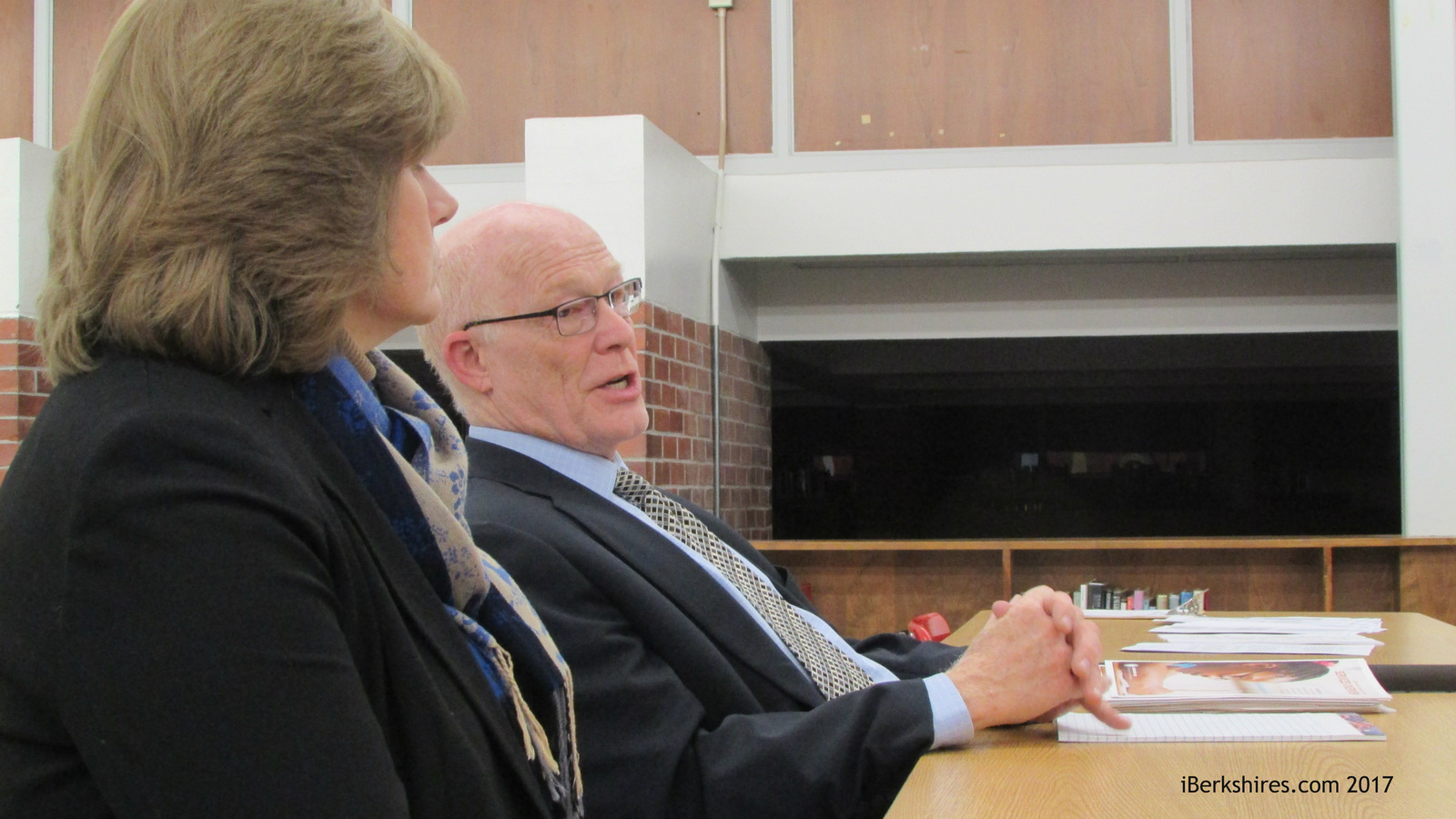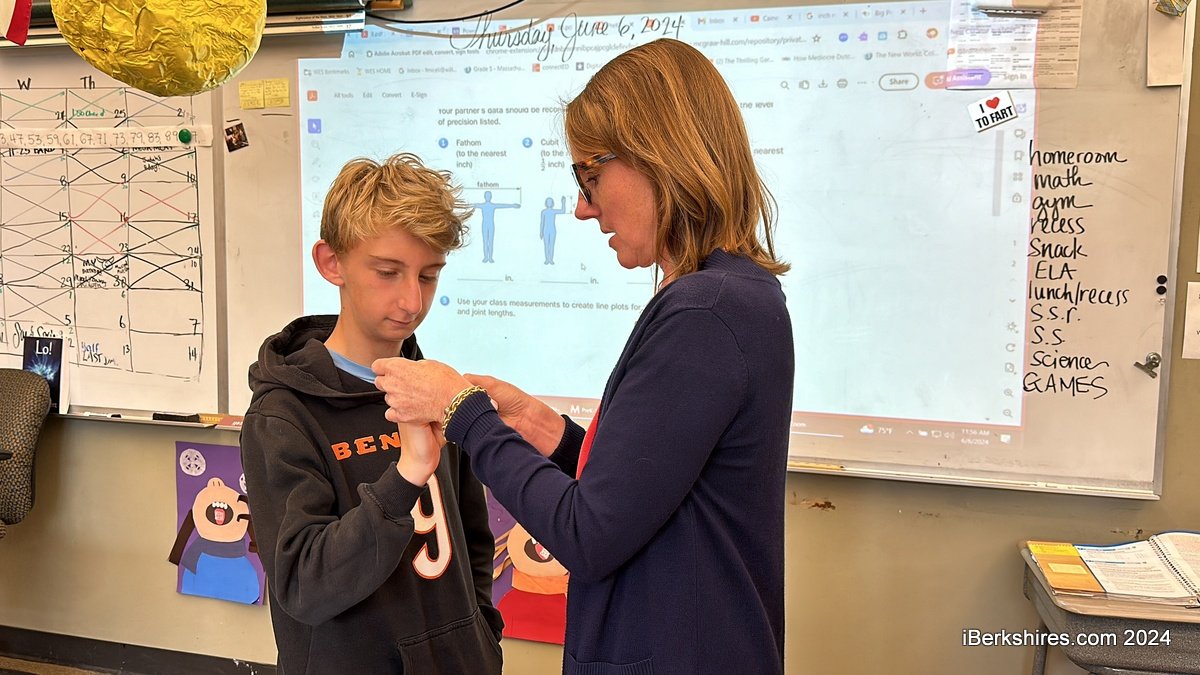
Williamstown School Committee Talks Special Education Collaboration
WILLIAMSTOWN, Mass. — A collaborative agreement among North County school districts could save money and improve outcomes for special needs students throughout the district, an official working on the collaboration told the Williamstown School Committee on Wednesday.
North Adams Public Schools Superintendent Barbara Malkas said she'd seen the benefits of educational collaboratives when leading the public schools in the Worcester County town of Webster.
"I know from experience there that the services that could be provided to students through collaboratives provided tremendous cost savings to a district," Malkas said. "I recognized there was a tremendous need in North Adams and North Berkshire in general."
Malkas said she and her fellow superintendents are working to develop an educational collaborative in the region — work that dovetails with that of the countywide Berkshire County Education Task Force, which also gave a presentation at Wednesday’s meeting.
A collaborative, Malkas said, could save North County districts money on professional development opportunities for staff, bulk buying and transportation services. But much of her talk focused on the potential for collaboratives to improve special education programs — both from the perspective of the bottom line and the quality of student experiences.
According to a memo provided to the committee, some students in the region are placed in programs "up to 130 miles from the home district." Administrators believe that a North County collaborative could provide the same services at a lower cost and and without the transportation burden.
"The goal is for us to have a tuition-based program, so for students enrolling in that program, there would be a tuition cost, like there is now, but the difference is you wouldn’t have the transportation costs," Malkas said. "And collaborative tuitions tend to be lower than private school tuitions."
The memo from Malkas' group cites "increasing student needs combined with declining enrollment" as driving up the cost of special education programs.
"The data shows that approximately 13 percent of children ages 8 to 15 had a diagnosable mental disorder within the previous year," the memo reads.
"We're not looking to replace programs," Malkas said. "North Adams has several well developed special education programs that we're very proud of. We're not looking to replace them. We're looking to continue that continuum of services so we're not sending kids over the mountain."
Keeping students close to home allows them to be integrated into the community and improves the quality of education, the superintendents say.
"It also allows us to engage with families," Malkas said. "One thing we experience in North Adams is once a student goes out for evaluation — and the closest we have for evaluation is Springfield — now they're making recommendations for educational programming, and you're going to make recommendations based on what's in that area. That makes it a burden for families who have to go to that area.
"We're thinking of a wraparound service model for students — keeping them involved in the local community and keeping their parents involved in the local community."
On Thursday, Malkas gave a similar presentation to the Mount Greylock School Committee, where she was joined by Bill Diehl, the executive director of Franklin and Hampshire Counties' Collaborative for Educational Services.
In addition to providing shared services for 11 school districts in the two counties, CES provides other types of support, Diehl said.
"We play an advocacy role for our member districts," he said. "This past year on the charter school issue, we didn't take a position on it, but we were able to present data to [State Senate President Stanley Rosenberg].
"There's also the rural sparsity idea — an idea born in Wisconsin. The idea is that in rural areas with sparse population, there is increased cost per student. Wisconsin provides additional money to areas with sparse population. Part of the role of the collaborative is to hear our member districts and advocate for their needs at the state level."
Malkas told the Williamstown committee that the superintendents hope to have a collaborative in place by Jan. 1, 2018. Individual school committees then would have the option to join the collaborative or not.
"It's all about cost savings," Malkas said. "We're hoping to create something that will give every member district the opportunity to save resources so they can allocate them to serving their students."
Meanwhile, the education task force is moving into Phase 2 of its process of assessing options for school systems throughout the county.
Mount Greylock School Committee member Carolyn Greene, a member of the task force, told the Williamstown committee that Phase 1 — which included a comprehensive study by the University of Massachusetts' Donahue Institute — confirmed what public officials believed to be the case: school age population continues to decline county wide.
"Our enrollment is down 22 percent in 15 years, from 2000 to 2015, and is projected to go down another 11 percent in 2025," Greene said. "In this very northwest part of the county, we're a little more protected. We have some steady employment, and the population is not projected to go down as quickly, but we're still on the decline."
Meanwhile, costs increase, state funding remains flat and towns throughout the county are bumping up against their tax levy limits.
The task force, which includes school committee members and administrators representing towns throughout the county, is using $150,000 from the commonwealth to hire Boston's District Management Council as a consultant on Phase 2 of the study.
"The goal of Phase 2 is to do some modeling — to predict economic and programming implications of four models," Greene said. "The goal is provide options to our districts for possible implementation in fiscal year 2019."
Greene emphasized that the task force is an advisory body whose only mission is provide options and information to the municipalities that ultimately will decide what steps make sense for their district.
"One [model] is to do nothing," Greene said. "We know that's not sustainable. We can look at expanding collaboration and shared services. A lot of that is going on in Berkshire County already. We can form collaborations with neighboring districts. Or we can form super regions.
"This is an opportunity for Berkshire County schools and districts to figure out what works for us without the state telling us what to do."
Phase 2 of the task force's study will look at the "educational, financial, logistical, organizational, regulatory, legal, social and political ramifications" of different models for education in the county, Greene said. High on the list of priorities for the task force is respect for the individual character of school districts.
"No one will tell your town or your district what you should do," she said. "The overall message is we're all in this together."
Tags: education task force, educational collaborative, special education, WES,
















